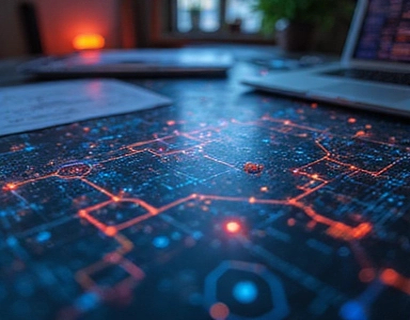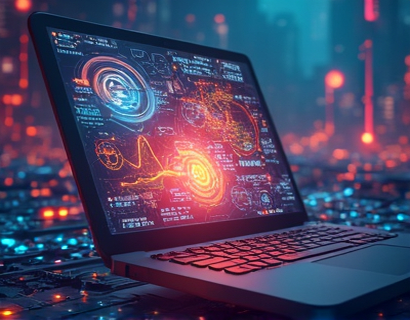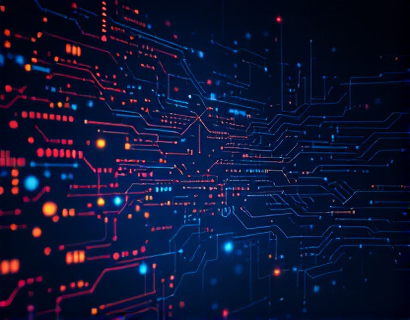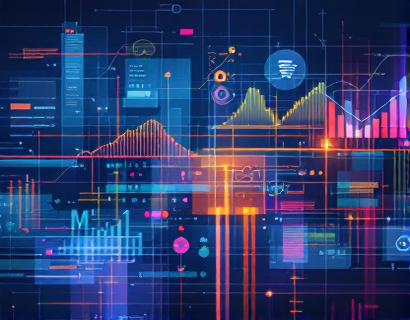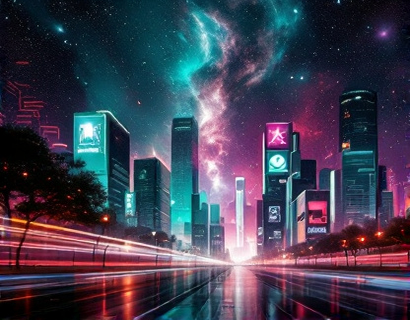NFTs: Empowering Creators and Collectors in the Digital Age
In the rapidly evolving digital landscape, Non-Fungible Tokens (NFTs) have emerged as a transformative force, redefining the way creators and collectors interact with digital assets. This innovative technology leverages blockchain to create unique, verifiable, and tradable digital items, offering a new paradigm for digital ownership and scarcity. The rise of NFTs has opened up a myriad of opportunities for artists, collectors, and enthusiasts, fostering a dynamic and vibrant community that is reshaping the future of digital art and collectibles.
The Fundamentals of NFTs
To understand the impact of NFTs, it's essential to grasp the basics of this technology. Unlike cryptocurrencies such as Bitcoin or Ethereum, which are fungible and interchangeable, NFTs are unique and cannot be exchanged on a one-to-one basis. Each NFT represents a distinct digital asset, such as a piece of art, a video, a song, or even a virtual real estate plot. This uniqueness is achieved through smart contracts on blockchain platforms, which encode specific attributes and metadata for each token.
The blockchain's decentralized and transparent nature ensures that the ownership and provenance of NFTs are immutable and verifiable. This transparency builds trust within the community, as every transaction is recorded on a public ledger. The combination of uniqueness and verifiability makes NFTs an ideal medium for digital creators to monetize their work and for collectors to acquire and own unique digital items.
Empowering Creators
For digital creators, NFTs offer a revolutionary way to monetize their work and establish a direct connection with their audience. Traditional art markets often involve intermediaries such as galleries and agents, which can take a significant portion of the artist's earnings. NFTs eliminate these middlemen, allowing creators to retain more control and revenue from their sales.
Platforms that support NFT creation and sale provide tools for artists to mint their digital assets, set prices, and manage sales. These platforms often offer features like royalties, ensuring that creators receive a percentage of the sale price whenever their NFT is resold. This mechanism not only incentivizes the creation of high-quality content but also fosters a sustainable ecosystem where artists can continue to produce and innovate.
Moreover, NFTs enable creators to experiment with new forms of digital art and interactive experiences. For instance, artists can create immersive virtual reality (VR) experiences or interactive stories that are tied to specific NFTs. These innovative formats not only enhance the viewer's experience but also open up new revenue streams for creators.
Enhancing Collector Experiences
Collectors, on the other hand, benefit from NFTs through the ability to own and showcase unique digital assets. The scarcity inherent in NFTs ensures that collectors can acquire one-of-a-kind items, similar to physical collectibles. This scarcity adds value to the digital assets, making them desirable and potentially valuable investments.
NFT marketplaces provide collectors with a platform to discover, purchase, and trade digital assets. These platforms often feature robust search and filtering options, allowing collectors to find specific types of NFTs based on criteria such as artist, style, or price. The community aspect of these platforms also allows collectors to connect with like-minded individuals, share knowledge, and participate in discussions about the latest trends and developments in the NFT space.
Furthermore, NFTs offer collectors the opportunity to own digital items that have real-world value. Unlike digital files that can be easily replicated and lose their uniqueness, NFTs guarantee the authenticity and ownership of the digital asset. This ensures that collectors can proudly display their acquisitions and even pass them down as heirlooms.
Innovative Solutions for Ucosystem Enhancement
The integration of NFTs into the digital ecosystem has led to the development of innovative solutions that enhance the overall user experience. One such solution is the creation of decentralized marketplaces that operate on blockchain networks. These marketplaces eliminate the need for centralized authorities, reducing transaction fees and increasing transparency.
Another innovative approach is the implementation of community-driven governance models. Many NFT projects adopt decentralized autonomous organizations (DAOs), where token holders have a say in the decision-making process. This democratization of governance ensures that the platform evolves in line with the community's needs and preferences, fostering a more inclusive and participatory environment.
Interoperability is another key area of innovation. Efforts are being made to ensure that NFTs can seamlessly move between different blockchain platforms and ecosystems. This interoperability not only broadens the potential audience for NFTs but also enhances the liquidity and accessibility of digital assets.
Transformative Impact on Digital Art
The impact of NFTs on the digital art world has been profound. Traditional art markets have long been dominated by physical artworks, but NFTs have leveled the playing field, allowing digital artists to gain recognition and financial success. The ability to prove ownership and authenticity through blockchain technology has validated digital art as a legitimate form of creative expression.
NFTs have also democratized access to the art market. Artists from diverse backgrounds and regions can now showcase their work to a global audience without the need for physical galleries or exhibitions. This accessibility has led to a more diverse and vibrant digital art scene, where emerging artists can compete alongside established names.
Furthermore, the use of NFTs in digital art has opened up new possibilities for collaboration and co-creation. Artists can create limited edition NFTs that include unique content or experiences, such as behind-the-scenes footage or exclusive digital items. These collaborative projects not only enrich the artistic experience but also provide additional value to collectors.
Challenges and Considerations
Despite the numerous benefits, the NFT space is not without its challenges. One of the primary concerns is the environmental impact of blockchain transactions, particularly those on energy-intensive networks like Ethereum. The carbon footprint associated with mining and transaction processing has sparked debates about the sustainability of NFTs. In response, many projects are exploring more eco-friendly blockchain solutions, such as proof-of-stake (PoS) networks, to reduce their environmental impact.
Another challenge is the regulatory uncertainty surrounding NFTs. As this space grows, governments and regulatory bodies are beginning to take notice, leading to calls for clearer guidelines and frameworks. Creators and collectors need to stay informed about the legal aspects of NFTs to navigate potential risks and ensure compliance.
Security is also a critical consideration. While blockchain technology is secure, the platforms and wallets used to interact with NFTs can be vulnerable to hacks and scams. Users must adopt best practices for security, such as using secure wallets, enabling two-factor authentication, and being cautious of phishing attempts.
Future Prospects
The future of NFTs looks promising, with ongoing developments poised to further enhance the digital ecosystem. One area of growth is the integration of NFTs with other technologies, such as augmented reality (AR) and virtual reality (VR). These integrations can create immersive experiences where NFTs serve as keys to unlock unique digital content or interactions.
Another exciting development is the expansion of NFTs beyond art and collectibles. Industries such as gaming, music, and real estate are exploring the potential of NFTs to represent in-game assets, music tracks, and property deeds. This cross-industry adoption can lead to new business models and revenue streams, further solidifying the role of NFTs in the digital economy.
Additionally, the rise of decentralized finance (DeFi) platforms is creating opportunities for NFT holders to leverage their tokens in financial applications. NFTs can be used as collateral for loans, traded on decentralized exchanges, or even staked to earn governance tokens. These financial innovations can increase the utility and value of NFTs, making them more attractive to a broader audience.
Conclusion
The advent of NFTs has ushered in a new era of digital ownership and creativity, offering transformative solutions for both creators and collectors. By leveraging blockchain technology, NFTs provide a secure, transparent, and decentralized way to create, trade, and manage unique digital assets. As the ecosystem continues to evolve, it is poised to drive innovation and growth across various industries, redefining the digital experience for all participants.
Joining a platform that embraces these innovations can elevate your digital presence and provide endless possibilities for creative expression and community engagement. Whether you are an artist looking to monetize your work or a collector seeking unique digital treasures, the world of NFTs offers a vibrant and dynamic space to explore and thrive.








